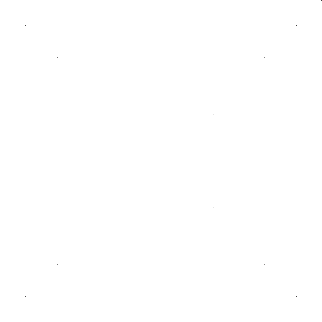MCB-DV-7102
1. IF IT'S FUN 2. ANGELA LOIJ
1. When I think about the word creativity I immediately stop being creative. I would like to accept creativity as a fact. Anonymous artist In a habitat of superabundance and countless possibilities, we force ourselves into a state of hyper-creativity. We yield to a physicality of open links, wandering about and through fragments of texts, movements, upset objects and flickering cultural signposts. This work emerged from our common need to grasp the role of creativity in our artistic work and to relocate ourselves in relation to it. From the economic sphere to the personal sphere, contemporary Western society increasingly demands everyone 'be creative.' We find that as artists, we are forced into a state of constant production of creativity in order to produce ever more of it. Does this marathon of activating creativity actually create creativity? This is a starting point for an adventurous voyage into the ambiguous nature of creative processes. We offer you an unfinished analysis of creativity. LEE MEIR ist als Choreografin, Performerin und Kostümbildnerin tätig. Sie arbeitete mit dem Clipa Theater, Israels führender visueller Theatergruppe, sowie mit weiteren ChoreografInnen und RegisseurInnen. Ihr Solo, Translation Included, gewann den ersten Preis bei der israelischen Biennale für junge ChoreografInnen im Jahr 2011. Lee erforscht Multi-Tasking als Mittel zur grundlegenden Erzeugung ihrer Arbeit, durch die sie die Entstehung und Transformation von Bedeutungen untersucht. MAYA WEINBERG arbeitet als Choreografin, Tänzerin und Lehrerin für Improvisation und Release-Technik. Sie arbeitete acht Jahre mit der Yasmeen Godder Company und entwickelt seit 2008 eigene Stücke, die oft in Zusammenarbeit mit anderen Tanz-, Video- und PerformancekünstlerInnen entstehen. Ihre Arbeit wirft grundlegende Fragen über das Medium der Performance auf und bietet auf unerwartete Weise Einblicke des Umgangs mit der tragikomischen Lücke, die zwischen Sprache und unausgesprochenen Absichten besteht. MAYA und LEE'S gemeinsames Forschungsfeld ergibt sich aus der Prüfung der Künstlichkeit der performativen Situation. Sie teilen den gleichen Drang, die Flexibilität der Kreativität zu erkunden und verschiedene Strategien zu untersuchen, um Langeweile in erfolgreiche Kunst zu transformieren. 2.The performance follows a desire to ornament the space through and with my body. I experience a body which thinks through movement. "I am a body", aware of the actual conditions of the space and the audience that establish the performance situation. The title, Angela Loji, refers to the last representative of the Selk´nam aboriginal group, who inhabited Tierra del Fuego in Chile until their extermination at the beginning of the 20th Century by European conquerors, and who developed a rich body-painting language for their rites of passage. A number of them were brought to Europe in 1889 to be exhibited in the centenary of the French Revolution "as an example of the contrast between progress and savageness", as stated at the time. Angela Loij was the last surviving fullblood Selk'nam. She died in May, 1974 in Rio Grande in the south of Chile. JUAN GABRIEL HARCHA ist Tänzer und Soziologe. Er studierte Schauspiel und Soziologie an der Universidad Católica de Chile. Seitdem führte er soziologische Forschung zu Innovation und Strategien für die Vermittlung von Wissen durch. Im Jahr 2013 beendete er das Programm "Tanz, Kontext, Choreografie" am HZT Berlin. Er schafft eigene Skizzen für Kostüme und Bühnenbild, entwickelte das Stück three (2011) und Sketch for psychedelic space arrangement (2013) und arbeitete vor kurzem mit der Choreografin Maria F. Scaroni zusammen. [Quelle: Abendzettel] Der Trailer von "ANGELA LOIJ" ist auf der Seite von Tanzforum Berlin verfügbar. frm
Powered by Froala Editor
